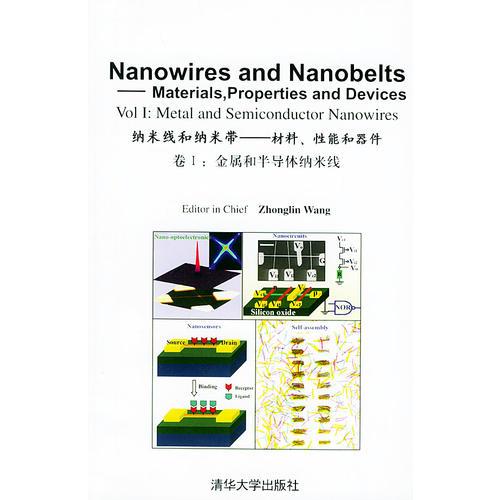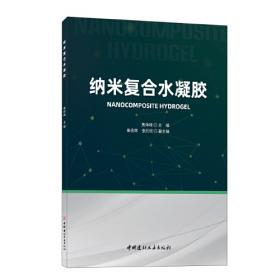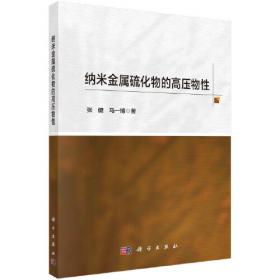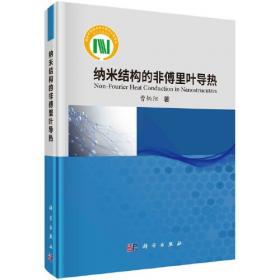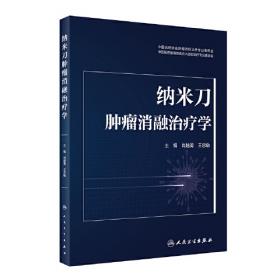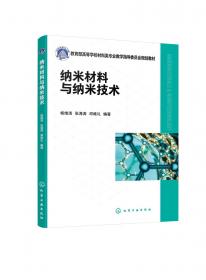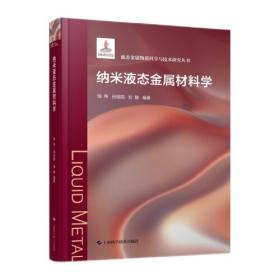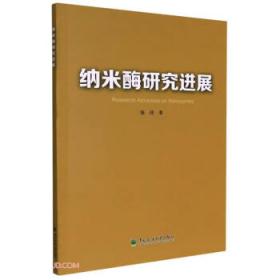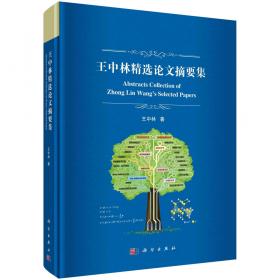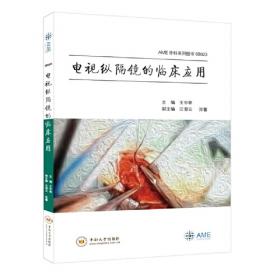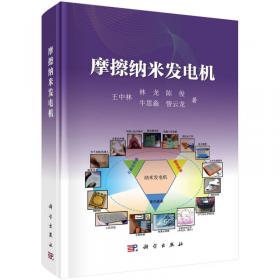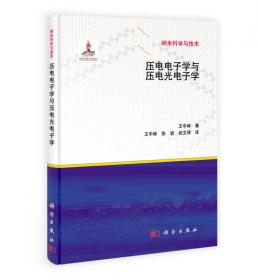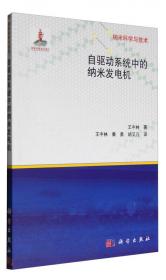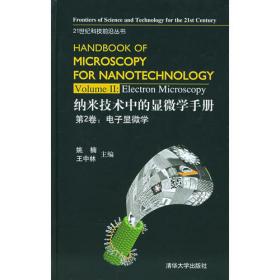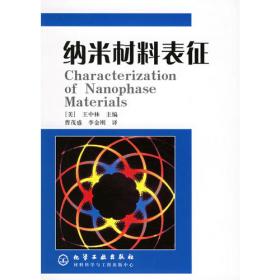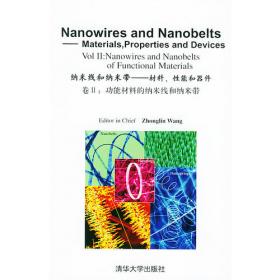纳米线和纳米带——材料、性能和器件(卷I:金属和半导体纳米线
出版时间:
2004-03
版次:
1
ISBN:
9787302082149
定价:
100.00
装帧:
平装
开本:
其他
纸张:
胶版纸
页数:
462页
8人买过
-
纳米线和纳米带是目前纳米科学和技术研究和发展中最为前沿的材料。这些一维纳米结构容纳了大量的材料,从金属、陶瓷、半导体到高分子,几科所有的材料都可以合成出一维纳米结构。半导体一维纳米结构的发展是从1998年开始的,而功能性氧化物一维纳米结构的研究是从2001年发现纳米带状结构开始的,到目前,该方面的研究成果与日俱增,发展速度惊人。 Preface
List of Contributors
I.Nanodevices and Nanocircuits Based on Nanowires
Chapter 1. Nanowires as Building Blocks for Nanoscale Science and Technology (Yi
Cui, Xiangfeng Duan, Yu Huang and Charles M. Lieber)
1. Introduction
2. Rational Synthesis of Single Component Nanowires.
3. Synthesis of Nanowire Heterostructures and Superlattices
4. Fundamental Properties of Single Nanowire Structures
5. Nanowire Chemical and Biological Sensors.
6. Assembly and Hierarchical Organization of Nanowires
7. Crossed and Integrated Nanowire Devices
8. Summary and Outlook
Chapter 2. Epitaxial Quantum Wires: Growth, Properties and Applications (Lars
Samuelson, B. Jonas Ohlsson, Mikael T. Bj6rk and Hongqi Xu)
1. Introduction
2. General Background and Introduction to thc Subject.
3. Theory on tile Band Structure of Semiconductor Nanowires
4. State of the Art in Epitaxial Growth of Vertical Quantum Wires
5. Processing and Studies of Nanowires as One-Dimensional Devices
6. Outlook
II. Theory of Nanowires
Chapter 3. Theoretical Study of Nanowires (Hatem Mehrez and Hong Guo)
1. Introduction
2. Phenomenology
3. DFT for Nonequilibrium Transport
4. Nonequilibrium Transport in Au Atomic Wire
5. Summary
Chapter 4. Modeling and Simulation of the Mechanical Response of Nanowires (Wuwei
Liang, Vikas Tomar and Min Zhou)
1. Introduction.
2. Mechanical Response of Nanowires
3. Size and Rate Effects in Nanowires.
4. Discussions on Future Directions
III. Molecular Nanowires and Metallic Nanowires
Chapter 5. Molecular and Ionic Adsorption onto Atomic-Scale Metal Wires (H. X. He,
S. Boussaad, B. Q. Xu and N. J. Tao)
1. Introduction {.
2. Fabrication of Atomic-Scale Metal Wires
3. Molecular Adsorption onto Atomic-Scale Metal Wires .
4. Anionic Adsorption
5. Summary.
Chapter 6. Structural Study of Metal Nanowires (Varlei Rodrigues and Daniel Ugarte)
1. Introduction
2. Morphology Imaging of Metal NWs.
3. Experimental Methods
4. Results and Discussion
5. NW Structure vs. Quantized Conductance Behavior.
6. Conclusion
Chapter 7. Metal Nanowires Synthesized by Solution-Phase Methods (Yugang Sun and
Younan Xia)
1. Introduction
2. Scope and Objectives
3. Solution-Phase Methods that Involve No Templates.
4. Template-Directed Synthesis.
5. Assembly of Metal Nanoparticles into 1D Nanostructures
6. Concluding Remarks.
Chapter 8. Chemical and Biomolecular Interactions in the Assembly of Nanowires
(Achim Amma and Thomas E. Mallouk)
1. Introduction
2. Phase Behavior of Nanowires
3. Synthesis of Compositionally Varied Nanowires
4. Molecular and Biomolecular Interactions in Nanowire Assembly.
5. Fluidic and Field-Driven Assembly of Nanowires
6. Conclusions
IV. Semiconductor and Nitrides Nanowires
Chapter 9. Group III- and Group IV-Nitride Nanorods andNanowires (L. C. Chen, K.
H. Chen, C.-C. Chen)
1. Introduction
2. Synthesis of Binary Group-III Nitride Nanorods and Nanowires
3. Synthesis of Ternary Group-III Nitride Nanorods and Nanowires
4. Synthesis of Binary and Ternary Group-IV Nitride Nanorods and Nanowires.
5. Structure and Bonding Characteristics
6. Optical Properties
7. Electrical Properties.
8. Summary.
Chapter 10. Template Assisted Synthesis of Semiconductor Nanowires (Dongsheng Xu
and Guolin Guo)
1. Introduction
2. Templates Used
3. Template Synthesis Strategies of Semiconductor Nanowires
4. Structural Characterization of the Template-Synthesized SNWs
5: 'Properties and the Future.
6. Conclusion
Chapter 11. Wide Band-Gap Semiconductor Nanowires Synthesized by Vapor Phase
Growth (D. P. Yu)
1. Introduction
2. Vapor Phase Evaporation.
3. Gallium Oxide Nanowires and Nanoribbons.
3. ZnO Nanowires and Nanotubes
4. ZnSe Nanowires
5. GaN Nanowires
6. Oriented Silicon Oxide Nanowires and Amorphous Silicon Nanowires
7. Summary.
Chapter 12. Semiconducting Oxide and Nitride Nanowires (Lide Zhang and Guowen Meng)
1. Synthesis of Oxide Nanowires.
2. Synthesis of Nitrides Nanowires
Chapter 13. Silicon-Based Nanowires (S. T. Lee, R. Q. Zhang and Y. Lifshitz)
I. Introduction
2. Oxide-Assisted Growth of Nanowires
3. Controlled Synthesis
4. Si Hybrids and Compounds
5. Characterization of SiNWs
6. Modeling
7. Oxide-Assisted Growth of Other (Not Containing Si) Semiconducting Nanowires
8. Summary
-
内容简介:
纳米线和纳米带是目前纳米科学和技术研究和发展中最为前沿的材料。这些一维纳米结构容纳了大量的材料,从金属、陶瓷、半导体到高分子,几科所有的材料都可以合成出一维纳米结构。半导体一维纳米结构的发展是从1998年开始的,而功能性氧化物一维纳米结构的研究是从2001年发现纳米带状结构开始的,到目前,该方面的研究成果与日俱增,发展速度惊人。
-
目录:
Preface
List of Contributors
I.Nanodevices and Nanocircuits Based on Nanowires
Chapter 1. Nanowires as Building Blocks for Nanoscale Science and Technology (Yi
Cui, Xiangfeng Duan, Yu Huang and Charles M. Lieber)
1. Introduction
2. Rational Synthesis of Single Component Nanowires.
3. Synthesis of Nanowire Heterostructures and Superlattices
4. Fundamental Properties of Single Nanowire Structures
5. Nanowire Chemical and Biological Sensors.
6. Assembly and Hierarchical Organization of Nanowires
7. Crossed and Integrated Nanowire Devices
8. Summary and Outlook
Chapter 2. Epitaxial Quantum Wires: Growth, Properties and Applications (Lars
Samuelson, B. Jonas Ohlsson, Mikael T. Bj6rk and Hongqi Xu)
1. Introduction
2. General Background and Introduction to thc Subject.
3. Theory on tile Band Structure of Semiconductor Nanowires
4. State of the Art in Epitaxial Growth of Vertical Quantum Wires
5. Processing and Studies of Nanowires as One-Dimensional Devices
6. Outlook
II. Theory of Nanowires
Chapter 3. Theoretical Study of Nanowires (Hatem Mehrez and Hong Guo)
1. Introduction
2. Phenomenology
3. DFT for Nonequilibrium Transport
4. Nonequilibrium Transport in Au Atomic Wire
5. Summary
Chapter 4. Modeling and Simulation of the Mechanical Response of Nanowires (Wuwei
Liang, Vikas Tomar and Min Zhou)
1. Introduction.
2. Mechanical Response of Nanowires
3. Size and Rate Effects in Nanowires.
4. Discussions on Future Directions
III. Molecular Nanowires and Metallic Nanowires
Chapter 5. Molecular and Ionic Adsorption onto Atomic-Scale Metal Wires (H. X. He,
S. Boussaad, B. Q. Xu and N. J. Tao)
1. Introduction {.
2. Fabrication of Atomic-Scale Metal Wires
3. Molecular Adsorption onto Atomic-Scale Metal Wires .
4. Anionic Adsorption
5. Summary.
Chapter 6. Structural Study of Metal Nanowires (Varlei Rodrigues and Daniel Ugarte)
1. Introduction
2. Morphology Imaging of Metal NWs.
3. Experimental Methods
4. Results and Discussion
5. NW Structure vs. Quantized Conductance Behavior.
6. Conclusion
Chapter 7. Metal Nanowires Synthesized by Solution-Phase Methods (Yugang Sun and
Younan Xia)
1. Introduction
2. Scope and Objectives
3. Solution-Phase Methods that Involve No Templates.
4. Template-Directed Synthesis.
5. Assembly of Metal Nanoparticles into 1D Nanostructures
6. Concluding Remarks.
Chapter 8. Chemical and Biomolecular Interactions in the Assembly of Nanowires
(Achim Amma and Thomas E. Mallouk)
1. Introduction
2. Phase Behavior of Nanowires
3. Synthesis of Compositionally Varied Nanowires
4. Molecular and Biomolecular Interactions in Nanowire Assembly.
5. Fluidic and Field-Driven Assembly of Nanowires
6. Conclusions
IV. Semiconductor and Nitrides Nanowires
Chapter 9. Group III- and Group IV-Nitride Nanorods andNanowires (L. C. Chen, K.
H. Chen, C.-C. Chen)
1. Introduction
2. Synthesis of Binary Group-III Nitride Nanorods and Nanowires
3. Synthesis of Ternary Group-III Nitride Nanorods and Nanowires
4. Synthesis of Binary and Ternary Group-IV Nitride Nanorods and Nanowires.
5. Structure and Bonding Characteristics
6. Optical Properties
7. Electrical Properties.
8. Summary.
Chapter 10. Template Assisted Synthesis of Semiconductor Nanowires (Dongsheng Xu
and Guolin Guo)
1. Introduction
2. Templates Used
3. Template Synthesis Strategies of Semiconductor Nanowires
4. Structural Characterization of the Template-Synthesized SNWs
5: 'Properties and the Future.
6. Conclusion
Chapter 11. Wide Band-Gap Semiconductor Nanowires Synthesized by Vapor Phase
Growth (D. P. Yu)
1. Introduction
2. Vapor Phase Evaporation.
3. Gallium Oxide Nanowires and Nanoribbons.
3. ZnO Nanowires and Nanotubes
4. ZnSe Nanowires
5. GaN Nanowires
6. Oriented Silicon Oxide Nanowires and Amorphous Silicon Nanowires
7. Summary.
Chapter 12. Semiconducting Oxide and Nitride Nanowires (Lide Zhang and Guowen Meng)
1. Synthesis of Oxide Nanowires.
2. Synthesis of Nitrides Nanowires
Chapter 13. Silicon-Based Nanowires (S. T. Lee, R. Q. Zhang and Y. Lifshitz)
I. Introduction
2. Oxide-Assisted Growth of Nanowires
3. Controlled Synthesis
4. Si Hybrids and Compounds
5. Characterization of SiNWs
6. Modeling
7. Oxide-Assisted Growth of Other (Not Containing Si) Semiconducting Nanowires
8. Summary
查看详情
-
九品
北京市海淀区
平均发货22小时
成功完成率89.93%
-
九品
北京市昌平区
平均发货23小时
成功完成率88.77%
-
全新
海南省海口市
平均发货23小时
成功完成率79.92%
-
 4
4
2004-03 印刷
印次: 1
九品
北京市朝阳区
平均发货4小时
成功完成率97.53%
-
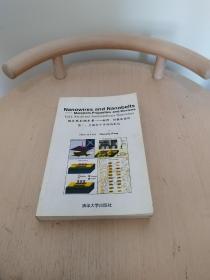 5
5
九品
山东省济南市
平均发货11小时
成功完成率95.26%
-
 6
6
九品
北京市丰台区
平均发货16小时
成功完成率94.25%
-
全新
湖南省长沙市
平均发货13小时
成功完成率91.51%
-
 4
4
九五品
北京市朝阳区
平均发货5小时
成功完成率97.24%
-
全新
海南省海口市
平均发货24小时
成功完成率85.65%
-
 4
4
2004-03 印刷
九品
北京市朝阳区
平均发货26小时
成功完成率78.7%
-
九品
北京市昌平区
平均发货17小时
成功完成率90.99%

 占位居中
占位居中

